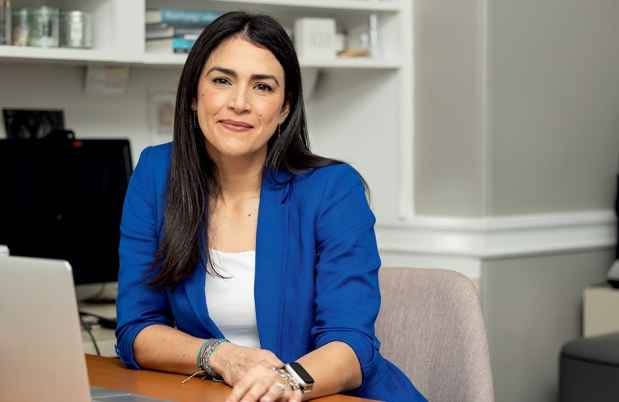Diagnostics: Best Practices Around Providing an Accurate Diagnosis
Available with English captions and subtitles in Spanish.
A conversation with Sophia L. Maurasse, MD, McLean Hospital, and Roberto Olivardia, PhD, McLean Hospital.
The Importance of Diagnosis
When providing a diagnosis to patients, clinicians must keep many factors in mind. In their talk, Olivardia and Maurasse discuss how to obtain critical information when making a diagnosis and how to convey a diagnosis in a way that benefits patients.
Watch now to learn more about:
- How to listen to the narrative of a patient’s symptoms
- How to avoid clinician bias and remain open to the patient’s unique experiences
- How to convey diagnoses in a way that empowers the patient
Olivardia and Maurasse emphasize how important it is for providers to create a nonjudgmental space when making a diagnosis. When patients believe they can be open and honest, they can provide important information towards their own care.
Olivardia says he listens for the story of a patient’s symptoms. “We have the DSM with bullet points that are laid out, but I’m always interested in the narrative behind that,” he says. “Sometimes people can check the box of a bullet point, but the story behind it isn’t aligned with what somebody might say.”
Maurasse considers the diagnostic process as a relationship with a patient, which depends on collaboration. “I bring in the expertise around the treatment, and they’re bringing in their expertise around their own experience,” she says.
To develop this relationship, Maurasse uses a framework of “who, what, when, and why” to:
- Understand who she is getting the information from
- What she and the patient are talking about (for example, are they on the same page?)
- When did the behavior occur in the patient’s developmental context
- Where in the patient’s life the patient is being impacted
- Why the patient is struggling with certain behaviors
Clinicians should be aware of their own biases in making diagnoses and remain curious about what patients bring to the session. The greater the relationship therapists can build with a patient, the more accurate the diagnosis will be.
Olivardia states that providers should get a sense of what patients hope to gain from a diagnosis. Some patients may wish to receive a diagnosis in order to better understand themselves and receive proper treatment. Others may fear receiving a diagnosis due to stigma.
Sometimes, clinicians can avoid giving diagnoses, especially for mental health conditions that have been more heavily stigmatized. However, such avoidance benefits no one and robs patients of the opportunity to better understand themselves and receive the care they need.
“I always try to help patients look at a diagnosis as not something to fear,” says Olivardia. “It is not a label, but a portal that opens you up to validation, for community, and to treatment.”
Continuing education credits are available. Sign up now!
Audience Questions
- Can you walk us through some of the most important lessons you’ve learned about diagnosing patients?
- How do you keep yourself from jumping to conclusions in a diagnosis and stay open to possibilities?
- How often do you find yourself needing to modify an initial diagnosis? How do you go about doing that?
- What do you do when a patient comes to you with a self-diagnosis that does not strike you as the correct diagnosis for them?
- Can you speak to the importance of building a trusting relationship with a patient as it relates to diagnosing them?
- Any tips for how to get started with a patient when there are clearly several potential diagnoses at play?
- What do you do in a situation where insurance requires a diagnosis to prove the need for treatment, but you’re unsure what the diagnosis might be due to needing more time with a patient? Is a provisional diagnosis needed?
- Can you summarize what you’ve learned across the span of your career in terms of providing accurate diagnoses?
The information discussed is intended to be educational and should not be used as a substitute for guidance provided by your health care provider. Please consult with your treatment team before making any changes to your care plan.
Resources
You may find this additional information useful:
- Video: Understanding ADHD in Kids & Teens
- Everything You Need To Know About Borderline Personality Disorder
- OCD: What You Need To Know
- Video: Navigating the Ups and Downs of Bipolar Disorder
- Yes, There Is a Big Difference Between Mental Health and Mental Illness
- Access to the full Emerging Leaders in Mental Health course
About Sophia L. Maurasse, MD
Dr. Maurasse has a longstanding interest and experience in treating medically ill patients with psychiatric disorders and in the use of behavioral interventions. In her current position as medical director of McLean’s 3East adolescent residential programs, she uses dialectical behavior therapy (DBT) in a way that fully integrates the physical and mental health of her patients.
Dr. Maurasse is especially interested in her patients’ relationship to their disorders and the treatment used to address them, using DBT in understanding adaptive and maladaptive eating behaviors, resilience, and the impact of the culture of medicine.
About Roberto Olivardia, PhD
Dr. Olivardia specializes in the treatment of attention deficit/hyperactivity disorder, body dysmorphic disorder, and obsessive compulsive disorder, as well as issues that face students with learning disabilities. He maintains a private practice just outside of Boston, Massachusetts and also conducts diagnostic evaluations at The Pavilion at McLean Hospital.
Dr. Olivardia is co-author of “The Adonis Complex.” He currently serves on the Professional Advisory Boards for Children and Adults With ADHD (CHADD), The Attention Deficit Disorder Association (ADDA), and serves on the Scientific Advisory Board for ADDitude. He has spoken on numerous webinars and presents at many talks and conferences around the country.



